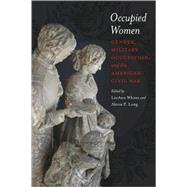
What is included with this book?
| Introduction | p. 1 |
| Gender Relations and the Development of Union Military Policy | |
| (Mis)Remembering General Order No. 28: Benjamin Butler, the Woman Order, and Historical Memory | p. 17 |
| Bedrooms as Battlefields: The Role of Gender Politics in Sherman's March | p. 33 |
| "Physical Abuse ... and Rough Handling": Race, Gender, and Sexual Justice in the Occupied South | p. 49 |
| Occupied Women and the War at Home | |
| Gettysburg Out of Bounds: Women and Soldiers in the Embattled Borough, 1863 | p. 67 |
| "She-Rebels" on the Supply Line: Gender Conventions in Civil War Kentucky | p. 88 |
| "Corresponding with the Enemy": Mobilizing the Relational Field of Battle in St. Louis | p. 103 |
| The Practical Ladies of Occupied Natchez | p. 117 |
| Occupations Within Occupation: Race, Class, and Culture | |
| Between Slavery and Freedom: African American Women and Occupation in the Slave South | p. 137 |
| Occupied at Home: Women Confront Confederate Forces in North Carolina's Quaker Belt | p. 155 |
| Widow in a Swamp: Gender, Unionism, and Literacy in the Occupied South during the Civil War | p. 171 |
| Epilogue: The Fortieth Congress, Southern Women, and the Gender Politics of Postwar Occupation | p. 185 |
| Notes | p. 195 |
| Notes on Contributors | p. 243 |
| Index | p. 247 |
| Table of Contents provided by Ingram. All Rights Reserved. |
The New copy of this book will include any supplemental materials advertised. Please check the title of the book to determine if it should include any access cards, study guides, lab manuals, CDs, etc.
The Used, Rental and eBook copies of this book are not guaranteed to include any supplemental materials. Typically, only the book itself is included. This is true even if the title states it includes any access cards, study guides, lab manuals, CDs, etc.